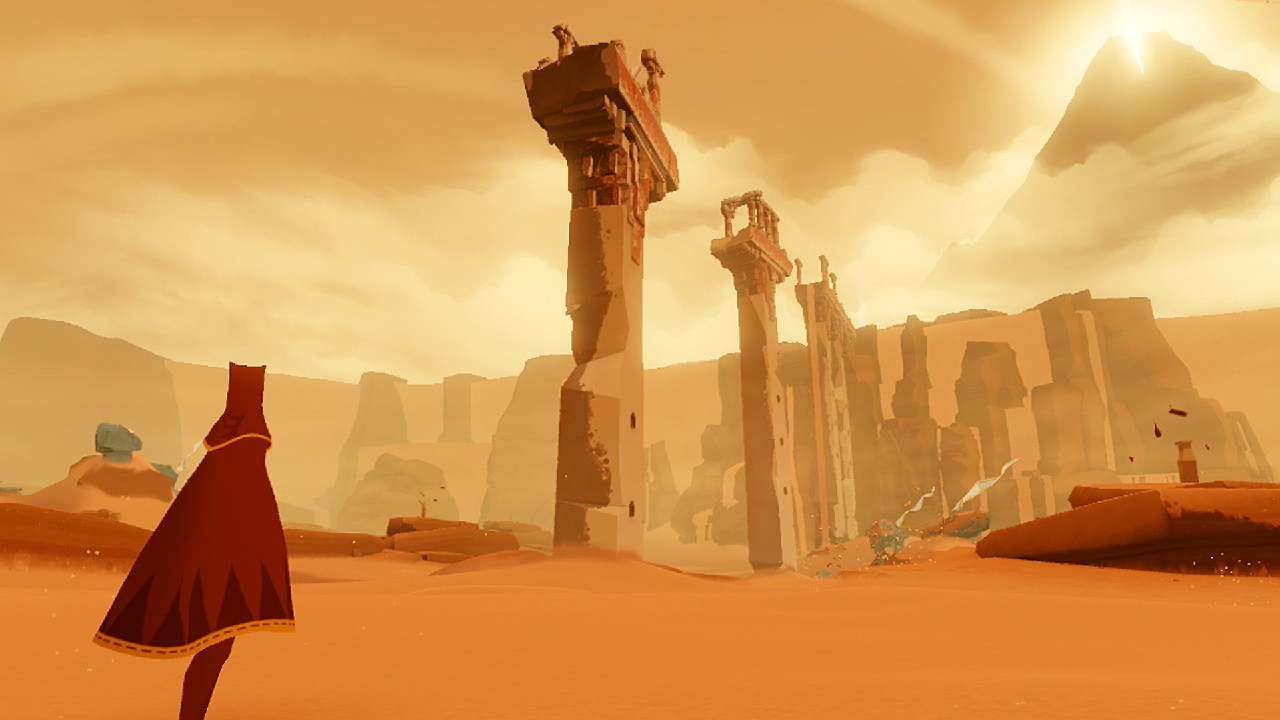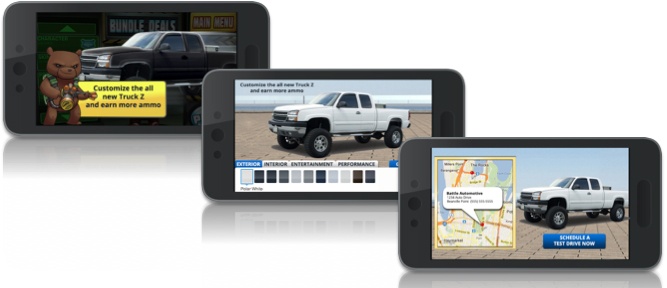When you talk about influential games on the PS3, you’re sure to mention Flow, Flower, and Journey, the troika of games created by thatgamecompany. These games were designed to elicit emotion, and presented a very different form of gameplay than typical console games. Their unusual nature and attention to detail brought awards and a sizable audience, and helped bolster Sony’s image as a company that fosters innovation on its platform.
Now thatgamecompany, co-founded by Jenova Chen, has reached the end of its three-game contract with Sony. Thatgamecompany has raised venture capital and is working on its first title that will be self-published, a major step forward. Chen now has to think not only about design, but about how a game will make money, the audience for a game, and what platform to publish on. The [a]list daily spoke with Jenova Chen about his approach to design and the new challenges he faces self-publishing in a rapidly changing game industry.
With all of the changes in the game industry, such as the emergence of mobile games, new consoles and new business models like free to play, how do you choose the platform to develop for What platform have you chosen for your next game, and why?

Jenova Chen
My company is very different than what is out there. We are not here to make games because we know mobile or social games are hot and they make a lot of money, so we want to make them. We started the company with a very simple goal: We want to make games that not just hard-core gamers, but everybody would like to play, not just hard core gamers. Games should be serving the mass audience. We’ve been experimenting with design techniques to create emotions that are relevant to people beyond the hardcore player. When we choose a platform, whether it is hardware or mobile or social, it is always about people, not what’s the hardest thing or the coolest thing.
With self publishing, does that change your choices?
I look at the industry from a supply and demand perspective. Recently there was a huge rise in social games, with Zynga coming out. Now social is going on a downward curve with mobile becoming the new hot area in the industry. What I see is that console gaming has been fairly stable. They’ve been doing the same things they’ve been doing for the past ten years and aiming at pretty much the same audience, maybe slightly older, teenage boys and young men. My fundamental view of the entertainment industry is to look at it through the perspective of feeling. Whether it’s film or games or novels, it’s pretty much about feeling. On the positive side you have romance, comedy, action-adventure, drama. On the cold side you have thriller, horror, sometimes science fiction. It’s very much more about feeling than what video games typically say. An MMO is mostly talking about the technology rather than a feeling.
If you look at the demographics of people with films compared to videogames, you’ll find the same group who likes to plays console games has been into the big summer blockbuster, action-adventure movies blockbusters and rock and roll and hip hop. The same demographic has been consuming a specific feeling across all medias. It’s very easy to understand why console games are the way they are, because they’re trying to satisfy the power fantasy of a teenager who doesn’t actually have the freedom and the power and they like to have those feelings supplemented. The only game in the past that was popular for females, that was really huge, was The Sims because it’s the first game that gives a social feeling between players.
What are the new opportunities you see?
Let’s look at today’s market — what has changed? People say a lot of money is moving out of consoles to mobile games or social games. That might be true on the surface, but what I would say is the same group of people who play Zynga games are not really console gamers. It’s not like the console player will start leaving consoles to play FarmVille. That group of people are actually the original casual game player. Casual gaming historically has been fairly small. That’s also why the hardcore gamers looked down on casual. When Facebook came out, that same group of people who played casual games got notifications. Why don’t you try it out? No credit card, no install, suddenly the same group of people who liked this emotion got access to games.
Compared to the console game industry of yesterday, the difference is a bunch of people who never would have played any games are now one click away from games. Now the question is have you designed a game for them What about the girls I’m not trying to be sexist, but usually young females like to play things that have a lot of emotions and relationships. That probably explains why there isn’t a lot of female gamers that play console games. Candy Crush is more appealing to women because it’s social.
I was looking at the distribution of genres in films. The musical genre is more popular in older female groups, but not in the younger male group at all. Horror films are more popular with youngsters, and the more mature men and women are not interested in horror films. I was looking at all of these emotions like horror and thrillers . . . what are the emotions that are popular among all ages? If you want to make a business, you have to decide if you want to go niche or you want to go broad. If you’re on console and you want to do a summer blockbuster, you are facing huge competition. It’s probably not worthwhile — you need to go for a different emotion. The Wii was very successful because it was the first console that was concerned with a different feeling than traditional consoles.
To me if your opponent goes broad you should go blue ocean, and if you want to go niche you should still avoid the niche that is already overpopulated.
Where does thatgamecompany go?
This has a lot to do with why thatgamecompany was started. We grew up with games, gaming is a very dear and important medium. But as we grow older, most of our friends stop playing games. They say ‘I don’t have time for this.’ To me it felt really sad because the games that I really love are losing traction with people. Ten years ago when I came to the US I was hoping to crack the code and make games that still appeal to people who had grown up, who had given up games. At the time I had no idea of how to do it. Then I went to film school and learned screenwriting and animation. The game industry is following the development path of the film industry. What I thought would be great if we can make people love games again. I want to see people coming back.
What technology that’s current or coming up that do you think can have the most impact on game design?
In the long run, I am very excited about the fact that we can capture realistic humans and lighting and their performance. It’s not quite there yet, it’s very close. In the end, when you create emotions you have a wide range of media you can use in games. For example, animation or music. One of the strongest mediums that will evoke a strong response is performance is actually watching a human have real feelings. Next to performance, the strongest is music, which is why we spend so much time on music for our games. I’m looking forward to the future where directing a game is very much like directing a movie. You bring in actors, you work with them, you get the best performance out of them. I’m looking forward to that future, but right now I can’t do it, I’m not even going to bother trying.
With thatgamecompany self-publishing its next game, what are the marketing challenges you face How do you plan to overcome them?
Right now I think the interesting aspect is we’ve announced we’ll do cross-platform, but we haven’t quite narrowed it down to what platforms we’ll support. Especially now that there are all these new microconsoles coming out. Are we doing touch screen or controllers? So far we’ve been focused on touch because it’s so much more widely available to the general consumer. This has to do with the original goal with founding the company: We want to build games designed for everybody, not just gamers. So we want to be on a platform that everybody owns.
The challenge for marketing is we sort of understand how you would market a console game, thanks to Sony. We got to learn how to do marketing in the console business, which is very valuable. Now when you actually want to do that each platform is quite different. PS3 has 97 percent male 25 to 35 male audience, quite different from Android or iOS. Which media do you prioritize? Because you can throw money at it and not really reach potential players. We don’t have money to buy Superbowl ads. How can we reach many people and let them know the game is out there That’s the big challenge, and it’s a challenge to everybody. A lot of console publishers want to enter the mobile space, but have any of them managed to prove that they can make a game popular If you look at the top games, they’re all form independent publishers. That’s why we are going independent. There isn’t any service out that has proven to be worthwhile.

There are a lot of games that just can’t manage to find an audience, aren’t there? How do you get around that problem?
I’ve seen so many good games from the indie community that didn’t manage to get big on the mobile platforms. My hunch is that if you want to solve your marketing problem to get your game known, approaching a traditional marketing company is a bad idea because the world is changing. You have to take advantage of what you have in your studio to promote yourself. For us we are game makers, we’re not really good at anything else. I am hoping the game itself will encourage other people to tell other people about the game. If people are truly moved, they will share it with other people.
For me a lot of the Journey players said they got people to buy a PS3 just to play Journey, but that’s such a barrier. As a game designer I would like the game to have a very low barrier. If you’re trying to use mechanics to punish people, that’s bad. You have to invite your friends to get to the next level. You want to tell your friends about. What should happen is you truly entertain them or inspire them in an emotional way, and they want to tell their friends about it.
What’s the greatest opportunity ahead for game designers, and the greatest challenge?
I like to look at business through emotion. Right now the game industry is still at a very young phase. There is a lot of space for people to go deeper on emotion. We actually went quite deep on the feeling of action and adventure. The feeling of killing someone used to be some pixel changed color, now it’s some guy’s guts are falling out. A lot of other emotions can go a lot deeper, and that will result in each genre becoming more and more sophisticated. Emotion can go wider. The new emotion that was not possible in the past should be possible in the future. What is the equivalent in a video game of a romantic film? A documentary? A drama? What is a family video game? There are family games, but they are mostly for the kids. What is the equivalent of a Pixar film in the video game industry, where adults and kids can have fun together? They don’t exist right now. They are all blue ocean, and they are huge markets.
 Jenova Chen
Jenova Chen



